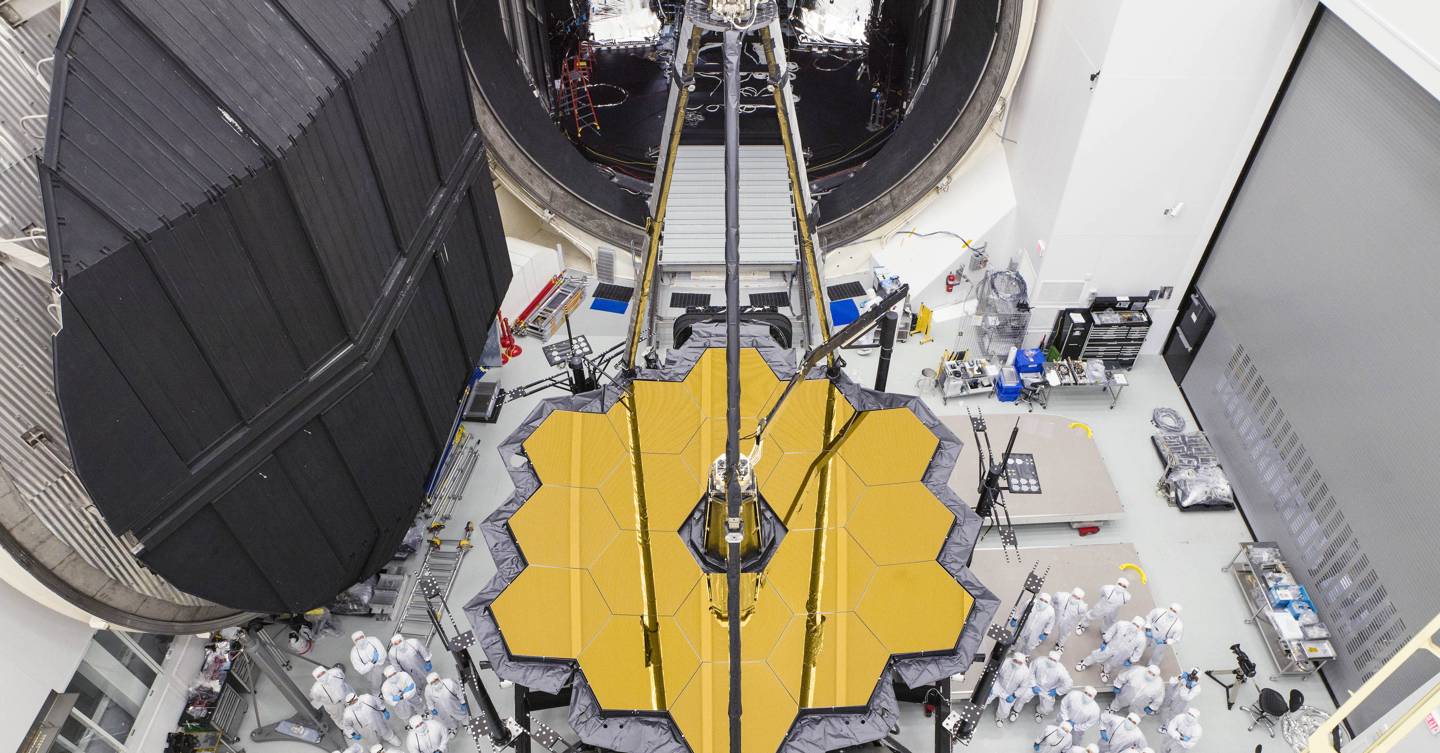
The launch of the James Webb Space telescope has been delayed, again, Nasa announced last week, after an “acoustics test anomaly” set things back. The new launch date for the world’s “next great astronomy observatory” has been scheduled for March 30, 2021, after budget overruns and test issues has resulted in a string of unforeseen delays.
Nasa cited misplaced optimism as the underlying problem here – for an observatory of this scale, the slightest oversight can lead to untold issues. An independent review board set up by Nasa to ensure oversight concluded that there are “no small” problems on a beast of this size.
“The complexity and highly integrated nature of the observatory” mean that “a very small human error or test anomaly can impact the schedule by months and the cost by tens of millions of dollars,” the board wrote.
Not all problems on a telescope of this size are small, however: tears in the tennis-court sized sunshield, at the hands of contractor Northrop Grumman, were one of the reasons launch was delayed earlier this year, Nasa announced back in March, when launch was rescheduled for May 2020 after an initial due date of October 2018 was abandoned.
Since the beginning of the project in 1996, after multiple delays and expanded scope, its budget has exploded from $0.5 billion to $9.6 billion. This ballooning has added a further $800 million to costs, meaning Congress has to re-approve the spending increase if Webb is eventually to go ahead.
The new launch date in theory buys time for implementing all of the review board’s recommendations, which includes new reporting and auditing structures and other forms of risk mitigation. Webb underwent a major redesign during 2005, and has a host of setbacks after testing began in 2016.
The Webb telescope – named after James E. Webb, administrator of Nasa from 1961 to 1968, who played an integral role in the Apollo missions – is being developed by Nasa, the European Space Agency, and the Canadian Space Agency to succeed the Hubble Space Telescope. It will offer unprecedented resolution and hopes to observe some of the most distant events and objects in the universe, like the formation of the first galaxies, stars, planets, exoplanets and novas.
Webb has a giant honeycomb structure, as in the photo above, of 18 gold-plated hexagonal mirrors made of beryllium, which together have a diameter of 6.5 meters, far bigger than Hubble’s 2.4. The telescope will be stationed near the Earth-Sun L2 Lagrangian point, and a huge sunshield of silicon and aluminium-coated Kapton (a polyimide film stable across many temperatures) will keep Webb’s mirrors below -220°C.
Unlike Hubble, which observes light in ranges near ultraviolet, visible, and infrared, Webb will observe light ranging from visible orange and red to mid-infrared. This means it can observe “high redshift objects” too old and too distant for earlier instruments to capture. As if the challenges of scale weren’t enough for the Webb team to counter, the observatory will be so far away from Earth that it is un-serviceable by manned or robotic missions: once it unfurls, there’s no going back.
“From detecting light from the first stars and galaxies in the distant universe to probing the atmospheres in nearby exoplanets for possible signs of habitability,” wrote Nasa's Thomas Zurbuchen, Webb’s outstanding science will underpin much of astrophysics going forward – let’s just hope it gets there eventually.
Read Again The launch of Nasa's giant Webb telescope has been delayed, again : https://ift.tt/2m2GCniBagikan Berita Ini















0 Response to "The launch of Nasa's giant Webb telescope has been delayed again"
Post a Comment